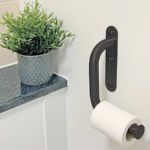Mobile Home appliances are one of the basic parts of every home, helping us to organize our, cook good food, and serve our home with full energy. But they can, over time, develop a gradually worse-for-the-wear appearance. If your appliances have an old color, scratches or you simply feel that the style of the appliances should change a little bit, painting them is a low-cost but highly creative solution.
Thank you for reading this post, don't forget to subscribe!This guide explains everything you need to know about appliance paint, from why it may be worth it to how to do it right. And by the end of this post, you’ll feel confident enough to apply a fresh professional finish to your home’s appliances!
Why Paint Your Appliances?
You may be thinking, why paint your appliances instead of just replacing them? Here are three great reasons why this DIY project is worth your while.
Cost-Effective Update
Major appliances such as refrigerators or ovens can quickly add up, with most models costing hundreds or often thousands of dollars to replace. Painting appliances is a much more budget-friendly solution. Most appliance paints have a price range of $20-$50, making it an affordable option for almost any budget.
Customization Without Limits
Are you stuck with the colors your appliances arrived in? With painting, you can be in control of how you paint. Upgrade from dated ivory refrigerator to on-trend matte black or a burst of bright red in the kitchen. There’s no limit to what you can do.
Extend Appliance Lifespan
Your appliances may be working just fine but chips, scuffs and discoloration can make them look older and less functional. Painting them can make these hard-working items look brand new again, protecting their exteriors and lengthening their lifespans.
Types of Appliance Paint
Not all paint is created equal, particularly when it comes to dealing with appliances subject to heat, moisture or wear and tear. When it comes to appliance paint, there are three major types to consider.
Spray Paint
Using spray paint on your home appliances is a great option as it gives a smooth and professional-like finish. It’s also fast drying and easy to apply on big areas. Spray paint does, however, need good ventilation and careful hand control to avoid uneven coats.
Brush-On Paint
If you want a bit more accuracy, brush-on paint is a good choice. You can aim for smaller spots or handicapped corners without worrying about overspray whatever. Although, if not applied with care, it may be left with visible brush strokes.
Specialty Appliance Paint
Specialty appliance paints are made for the unique challenges appliance surfaces present. Most brands (Rust-Oleum, Krylon) offer heat, moisture, and chip resistance formulas so you will have a durable and long lasting project.
Prep Work is Key
Preparation is key, groundwork is essential before you dive into painting. Skip any of these steps, and you may end up with peeling, splotchy coverage or a paint job that’s far from professional.
Clean Thoroughly
Appliances attract grease, dust, and grime. Degrease or use an all-in-one cleaner to remove surface contaminants. Scrub your surfaces with it and make sure it’s thoroughly dry before moving forward.
Sand the Surface
Sanding your appliance lightly will allow the paint to stick better. Gently scuff up the surface with fine-grit sandpaper (about 220-grit). You don’t need to strip all the original finish — you just want to rough it up a little.
Prime for Success
Especially if your appliance has a shiny or glossy surface, a high-quality primer is non-negotiable. Choose primers that will match the type of paint you used. Apply a single coat, even, and let it dry thoroughly before continuing.
Painting Process
Now that you’ve prepped your appliance, it’s time for the fun part — painting! For the best results, follow these step-by-step instructions.

Step 1. Gather Materials
Have all your essentials ready:
Appliance paint (spray or brush-on)
Paintbrush or spray nozzle
Tape and plastic sheeting to cover areas you do not want painted
Gloves and a mask for safety
Step 2. Protect Surrounding Areas
Tape off any sections of the appliance you don’t want painted (like handles or logos) with painter’s tape. Plastic sheeting should also cover nearby cabinets, walls and flooring.
Step 3. Apply the Paint in Layers
For spray paint, keep the can 10–12 inches away and spray on a thin, even coat, sweeping back and forth. With brush-on paint, apply smooth, even strokes and do not overfill the brush. Always use thin coats, allow each layer to dry fully before applying the next.
Step 4. Patience is a Virtue
Rushing will result in drips, uneven coverage or smudges. Allow your paint to dry according to the instructions on the label on the package, which typically says 24 hours, before handling.
Sealing and Finishing
A topcoat or sealant will provide that glossy, durable look to your appliance while also protecting the paint from scratches and wear. For appliances that are over exposed to high temperatures, use a topcoat with clear, heat resistant formula. Use it minimally so you do not end up with a tacky or uneven surface.
Summary Troubleshooting Common Painting Issues
But even if you do a proper prep and painting, there are a few things you may run into. Here’s how to troubleshoot some common problems.
Drips or Runs: After you have allowed it to dry, sand it down over the affected area gently, and add paint in thin coats.
Uneven coverage Make sure you’re putting on thin, even coats and giving each layer adequate time to dry.
Peeling Paint: If an existing surface hasn’t been cleaned, sanded, and primed properly, repainting will likely result in peeling.
Makeover Your Appliances with Appliance Paint
Painting your appliances is one of the easiest and least expensive ways to give your home a makeover. And in the kitchen, it’s an excellent way to personalize it, save some funds and prevent waste by making your appliances last longer. With the right prep work, patience and the right products, you can achieve a professional looking finish.
Feeling inspired but not quite ready to take the plunge? Tackle small appliances first—like a toaster or microwave—then bigger items such as your refrigerator. When you realise how rewarding the process is, you’ll become addicted!
Are you ready for your home makeover? Get your materials and start today.



